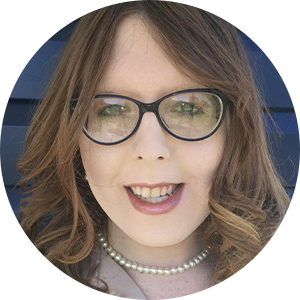As college campuses across the country grapple with the challenge of balancing free speech with inclusivity, university leaders are tasked with creating environments that protect open dialogue while fostering respect. Institutions, as a result, are adopting a range of policies and practices to maintain this delicate balance.
How do universities prepare their students for campus culture?
Leaders at four campuses share how their policies and educational initiatives foster respectful dialogue and free speech on campus.

Defining and Communicating Campus Culture
At the University of New Haven, Vice President for Student Affairs and Dean of Students Ophelie Rowe-Allen underscored the significance of the Charger Compact, a community values statement collaboratively developed by students, faculty and staff. The compact focuses on academic excellence, personal responsibility, mutual respect and a commitment to diversity and inclusion. New students encounter these values during SOAR (Student Orientation, Advising, and Registration) and Charge-In (student move-in) programs, while the student handbook provides a guide to expected conduct and engagement.
Southern Connecticut State University emphasizes its campus culture through a mission of equity, access and success. Vice President of Student Affairs Tracy Tyree noted that this mission is woven into new student orientation and New Owl Welcome events. These initiatives introduce students to more than 130 clubs and organizations, encouraging them to explore diverse interests and perspectives. With groups like the PRISM LGBTQ+ Club, Black Student Union, Muslim Student Association and others, the university offers spaces for students to connect with various communities.
University of New England (UNE) President James Herbert stressed the pivotal role of leadership in shaping campus culture.
“University presidents have a unique platform to promote civil discourse and set expectations for constructive dialogue,” he explained.
UNE strengthens this culture through initiatives like structured listening circles and the annual President’s Forum, held at the beginning of each academic year. The forum invites students, faculty and staff to engage in open discussions on important, challenging topics, fostering a campus environment that values respectful and thoughtful exchanges.
Freedom of Speech on Campus
Western New Mexico University fosters a balanced approach to free speech, encouraging open expression while respecting legal boundaries. Housing Director Jason Quimby and Director of Professional Development Bobbi Dodson explained that students are welcome to share their views, provided they do not promote hate or violence. This standard is conveyed during orientation and outlined in the student handbook, emphasizing guidelines for respectful discourse.
Kristen Shahverdian, program director for Campus Free Speech at PEN America, highlighted a common misunderstanding among students regarding free speech.
“The biggest question I get has to do with hateful speech, and the misconception that hate speech is unprotected speech,” she said.
Although universities must allow even offensive or controversial speech, students often perceive providing a platform as endorsing those viewpoints. Shahverdian recommended that universities consistently educate students about the First Amendment and academic freedom from the moment they arrive on campus.
UNE’s Vice President of Student Affairs Jen Deburro views free speech as an essential skill for self-advocacy and learning. Students are encouraged to refine this skill, helping them navigate complex conversations and debates. This focus begins during admissions and orientation and is reinforced through ongoing programs like the Center for Excellence in Teaching and Learning, which supports faculty in cultivating a culture of inquiry and dialogue.
Southern Connecticut State University takes a proactive stance on civil discourse. Tyree noted that the university supports free expression while prioritizing dignity, respect and kindness. Faculty lead by example in the classroom, modeling how to engage with differing viewpoints constructively. This approach, she added, not only nurtures diverse perspectives but also prepares students for effective, respectful engagement in their future professional and personal lives.
Resources and Policies
Each university offers resources to help students navigate campus culture and free speech. At the University of New Haven, Rowe-Allen emphasized the importance of the student handbook, which contains the Charger Compact—a community values statement—and outlines policies on freedom of expression and procedures for organizing demonstrations. The IDEA (Inclusion, Diversity, Equity and Access) Council also supports students by providing resources through the myCharger web portal, ensuring they are informed about their rights and responsibilities.
Western New Mexico University provides comprehensive guidance through its website, which features the student handbook, as well as faculty and staff handbooks. These documents lay out the university’s expectations and policies related to campus culture and free speech, serving as essential guides for students and staff alike.
UNE annually updates its student handbook, offering clear details on expectations, policies and procedures tied to campus life. Deburro highlighted the university’s ‘expression, demonstration and gathering’ policy, which helps students plan demonstrations while ensuring that academic operations are not disrupted. This policy, she noted, aims to strike a balance between the right to free speech and a positive learning environment.
Southern Connecticut State University’s student handbook, accessible on the university’s website, includes the Student Bill of Rights and the Connecticut State Colleges and Universities Policy on Campus Freedom and Order. Tyree pointed out that it provides clear guidelines on students’ rights and responsibilities related to free speech, helping them understand their role in maintaining a respectful and inclusive campus environment.
Ensuring Awareness and Adherence
Ensuring students understand and follow policies around free speech is a challenge many universities face. Rowe-Allen emphasized the need for ongoing education through orientation, residence life and campus dialogues. Initiatives on her campus, such as the Thrive Together: Campus Dialogues in a Changing World series, promote respectful conversations on diverse perspectives, ensuring students stay informed about their rights and responsibilities.
Shahverdian echoed this sentiment, stressing the need for ongoing education on free speech. “Universities can infuse this learning in first-year experience courses, speaker events, workshops, within clubs and student government,” she suggested. This multi-faceted approach ensures that students encounter these critical topics through various campus touchpoints.
Deburro highlighted a partnership, in which the university supports student-led demonstrations while addressing safety and operational concerns. This balance ensures that the right to free speech is upheld without disrupting campus activities. The university’s role, she added, is to support expression while maintaining a safe, functional academic environment.
At Southern Connecticut State University, faculty and administrators actively engage students in discussions about free speech and the value of diverse opinions. Tyree explained that these conversations happen in classrooms and during campus events. The university’s focus on civil discourse and restorative practices helps manage conflicts and deepens student understanding of these important issues.
“University presidents have a unique platform to promote civil discourse and set expectations for constructive dialogue.” ~ UNE President James Herbert
Challenges and Opportunities
Universities face ongoing challenges in fostering a culture of respect while supporting free speech. Rowe-Allen acknowledged the difficulty of balancing these priorities, emphasizing the need for clear policies and continuous education. Ensuring that free speech is exercised responsibly and respectfully, she said, is key to sustaining a positive campus climate.
Shahverdian added that campuses must also consider the impact of speech on their communities.
“At the same time that campuses uphold and defend free speech, they need to do the adjacent work of addressing the impact of speech on their community,” she advised. This includes condemning harmful speech, offering support to affected groups and encouraging counter-speech initiatives that provide alternative perspectives.
Tyree highlighted the challenge of navigating strongly held opinions, stressing the role of continuous education and restorative practices in resolving conflicts. She noted that the university’s director of education and restorative practices is instrumental in helping parties acknowledge harm and work toward resolution.
Herbert views the challenge as an opportunity for growth, emphasizing that university leaders must model constructive dialogue and embrace diverse viewpoints. He believes this approach is essential for fostering a campus culture in which meaningful change can occur through compassion and open-mindedness.
Newsletter Sign up!
Stay current in digital strategy, brand amplification, design thinking and more.
Recent in Education Administration
Also in Education Administration

DOE Secretary Linda McMahon already imposed mass layoffs. What’s next?
Before following President Trump’s direction to ‘put herself out of a job,’ the former wrestling matriarch has other ideas and wants Congress to give her a hand.

Higher ed faces a crossroads over Trump’s executive orders on DEI.
Legal experts and educators debate the future of diversity initiatives in the wake of new federal directives.

Higher ed administration gets AI boost.
Working through legitimate concerns, higher ed leaders are finding dynamic ways to integrate AI technology across campus offices.





